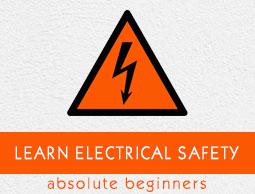Electrical Safety - Duties and Obligations
We will now learn the duties and obligations of various stakeholders related to the use of electrical equipment.
Supplier Obligations
The relationship between a supplier and a customer is a contractual relationship. However, the supplier must abide by a few moral duties to ensure customer satisfaction.
Reliability
The functions of a product should meet the consumer’s expectation.
Service life
The consumer’s mind has calculated the life of a device. Therefore, the product needs to perform efficiently during the expected time.
Maintainability
The product must be repaired or replaced during or after a specific duration.
Product Safety
It is a degree of risk related to the product that the product must be safe in normal condition.
Replacement
If a product does not meet the expected specification or if it is a faulty item, provisions for its replacement should be made.
Specification
The type, nature, components of product and the hazards related to the product must be specified clearly.
Technical Assistant
A technical assistant should visit the location to repair, maintain and provide a good after sales service.
Documents
The terms and conditions document including invoice, guarantee, warranty certificates, test reports and installation guide must be provided.
Moral Duties of Manufacturer
Consider the following points related to the moral duties of a manufacturer −
Duty must comply with the claims of reliability, service life, maintainability and safety
Duty of disclosure
Not to misrepresent and coerce
Due-care Theory
It is a known fact that a manufacturer enjoys an advantageous position than a consumer. So, it is the responsibility of the manufacturer to take special care of the consumer's trust and interest. This theory is known as the due-care theory. According to this theory, a supplier is responsible in the following areas;
- Design
- Production
- Information
Commercial Advertising
Advertisement plays a vital role to establish relations between producers and customers. The perks of advertising are −
- It attracts the audience
- Creates the intention to buy in a customer
- Creates the desire for the product
- Leads the customer to buy the product
Duties and obligations of a plant owner
Let us now see the duties and obligations of a plant owner. A plant owner needs to look into the following −
Project Management
The project of a plant commission goes through the following steps −
Mechanical work completion − Installation of piping, equipment, integrity, inspection, cold alignment, point-to-point continuity checks and preservation
Pre-commissioning − Cleaning, testing, air and steam blowing, flushing, passivation, system energizing and instrument verification
Commissioning − Operational testing, loading, running the equipment, electrical function testing, and safety testing
Acceptance of test run − A small unit operates for 12 hours continuously
Human Resource Management − After all the paper works and successful commissioning, the owner has a responsibility towards its employee. Managing engineers, technicians and operators is necessary for a successful start-up.
Plant Operation
A successful plant commission consists of four parts out of which if one fails, the plant would not be considered a successful one.
No lost time accidents − The safety factor bothers every beginner. So, there is more stress on design, construction and commission.
No equipment damage − This function is all about discipline in each section of the design, construction, operation and commissioning team.
On test product: The testing team should take a reasonable period to complete the testing of the product.
No environment incident − The successful making of a test product within a specific period defines this function and ensures no environmental hazards.
Healthy and Safety Environment
As the other plans include the inherent risk, a Health Safety and Environment Management Plan should be planned properly for the project. Therefore, the following procedures should be followed for each location of work.
- Identification of system
- Pre Start-up Safety Reviews (PSSR)
- Permission to Work System
- Identification of Hazards and Risk Management
- Simultaneous Operations (SIMOPS)
Questions
1. What is the acceptable duration for testing a product?
a) More than seven days
b) Less than seven days
c) More than fourteen days
d) Less than fourteen days
Ans: b
Explanation
The testing engineer should specify the time taken for the product testing.
- Less than two days is considered very good
- Seven days is acceptable
- Above fourteen days is less than acceptable
2. Which section the Due-care theory does not emphasize on?
a) Testing
b) Design
c) Production
d) Information
Ans: a
Explanation
According to the Due-care theory, a supplier has the responsibility in the areas of Design, Production, and Information.
3. Which one of the following is not a component of the HSE management system?
a) Identification of system
b) Pre Start-up Safety Reviews (PSSR)
c) Pre-commissioning to work system
d) Permission to Work System
Ans: c
Explanation
The components of Health Safety and Environment Management System are
- Identification of system
- Pre Start-up Safety Reviews (PSSR)
- Permission to Work System
- Identification of Hazards and Risk Management and Simultaneous Operations (SIMOPS)


